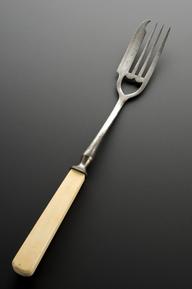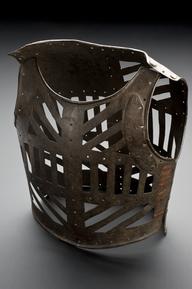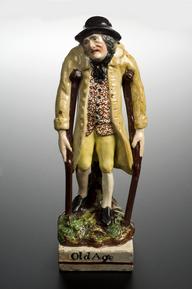

Two Thomas splints
- Made:
- 1870-1920 in unknown place
Two Thomas splints with iron frame and padded thigh loosp, for immobilising leg fractures, 1870-1920, but possibly supplied for use during the First World War, 1914-1918.
Simple devices like these have saved many thousands of lives. Invented in 1865 by Hugh Owen Thomas, a Welsh orthopaedic surgeon, the Thomas splint was designed to help immobilise fractures of the leg and it was during the First World War that it proved its life-saving potential.
In a war dominated by heavy artillery and machine guns, the impact on combatant’s bodies was devastating. On the battlefield, fractures of the thigh bone (femur) were common, but in the early years of the conflict survival rates were low. Soldiers wounded in this way endured painful evacuations away from the front lines, with their damaged legs either ineffectively splinted or with no splints at all. If they didn’t bleed to death in the process they were quite likely to succumb later to infections.
In December 1914, Thomas’ nephew Robert Jones was made Consultant Orthopaedic Surgeon to the British Army. Faced with such poor survival rates from femur fractures he promoted his uncle’s invention for early use on the front lines. When applied correctly with straps and bandages, the Thomas splint both immobilised the limb while still allowing access to wounds for dressing and cleaning. Despite Jone’s advocacy, it wasn’t until 1917 that the splint was routinely supplied but as it was introduced progressively nearer to the battlefields it dramatically reduced both death rates and the degree of long-term disability. Variations on the original splint design remain in use today.
Details
- Category:
- Orthopaedics
- Collection:
- Sir Henry Wellcome's Museum Collection
- Object Number:
- A603017
- Materials:
- frame, iron and covering, leather
- type:
- splints




